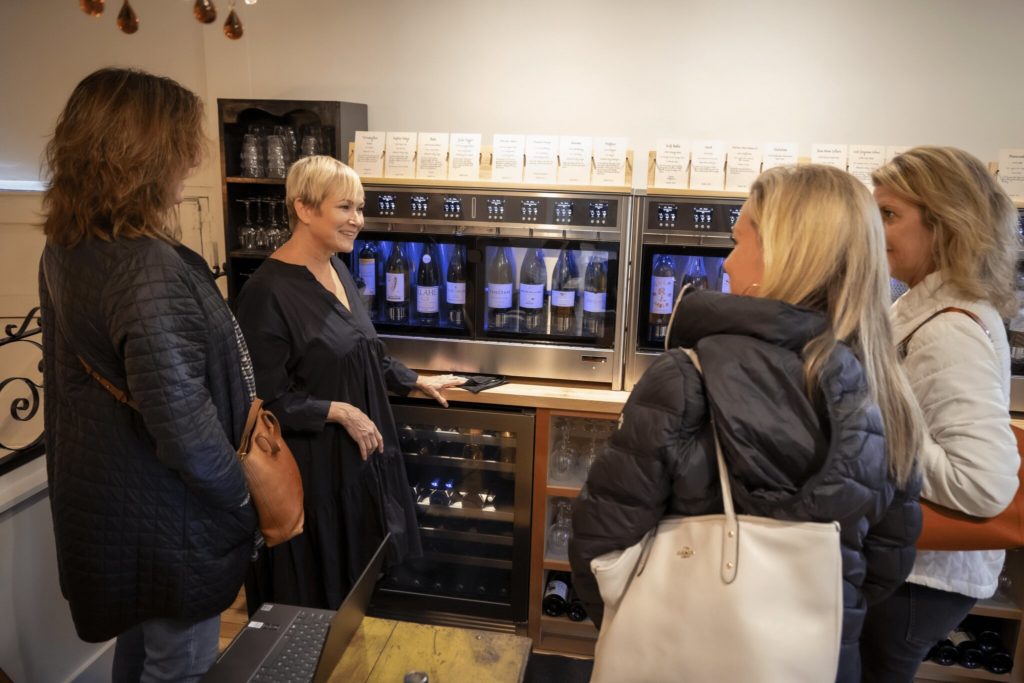
Opening a wine bar is a fantastic business idea, especially since many people are ready and willing to go out again. The challenge is that it's not so easy to get a bar off the ground and make the business profitable. Without a doubt, many entrepreneurs have tried the open wine bars and ultimately failed, but why? What were they missing that you should avoid?
Most likely, these defunct businesses never sustained profits because they didn't open up the proper way from the start. Opening a wine bar takes meticulous planning and a little anticipation because everything doesn't go according to plan no matter how much you try.
Anything could go awry when you open a bar, and it always seems to happen just when you don’t need it least. You could have problems with the building contractors, the alcohol distributor, your employees, or the regulations in your home state.
Notwithstanding those difficulties, you can open a successful wine bar if you get a great start and understand that you'll have to stay agile since it's your customers who will be the judge of whether or not you have a viable business.
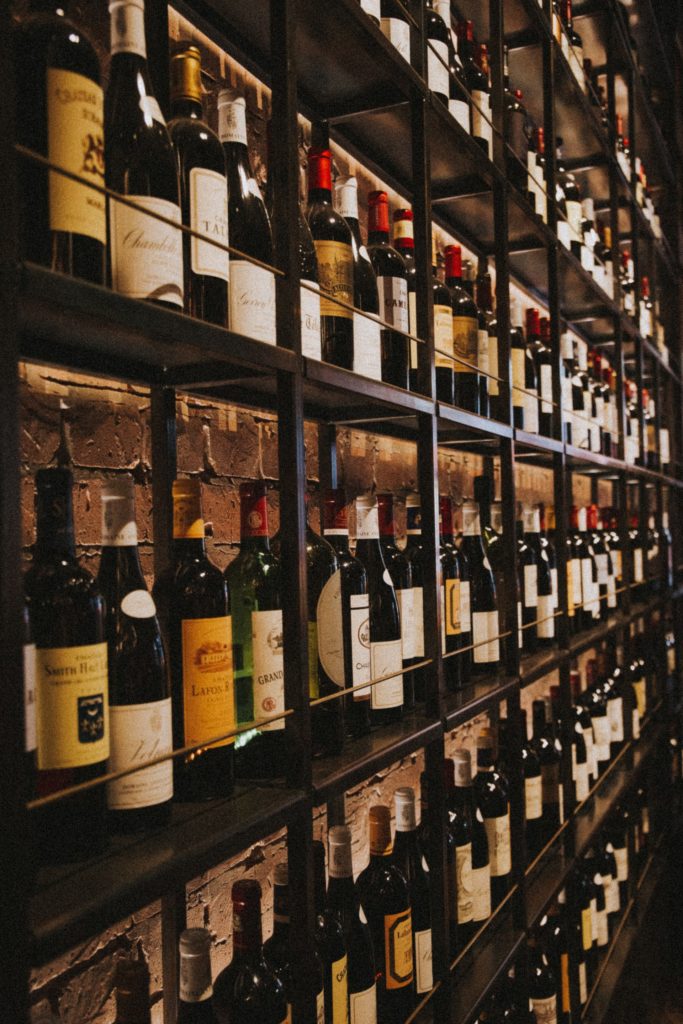
So, to show you the general process of opening up a wine bar, this article will outline the essentials, so you can tailor your bar’s concept to your target market and become a staple of the wine-drinking community in your hometown.
Most entrepreneurs begin with this question: How much does it cost to open a wine bar in the first place? The answers depend on how large of an establishment you’d like to open, how much wine stock you can afford, and the state licensing requirements you have to consider as well.
Not every state has the same laws concerning beer, wine, and liquor sales. Some have loose restrictions; others make you jump through several hoops before you can get a license to sell alcohol. For instance, in a state like Texas, counties have different requirements. In Harris County, you’ll find few zoning regulations aside from community-based ordinances, but in Travis County, you’ll likely have more bureaucratic hurdles to overcome from a zoning perspective.
While the cost of a license to sell alcohol varies state-to-state, a full liquor license (i.e., selling hard liquor on-premises) costs about $17,500 per year in Texas, but a license to sell beer and wine only costs about $1,000 per year. Most states will have similar expenses, but some licenses come with over-the-top prices. For example, in Utah, a liquor license costs much more because you'll need many permits for each individual location, which can quickly add up when it comes to annual renewals.
That should give you an idea of how to open a wine bar ahead of time, so it's always best to understand the particular laws in your state because, depending on where you live, you may not need very much licensing at all. On the other hand, if your state regulates alcohol sales and distribution heavily, you can expect to pay significantly more for basic licensing.
So, when opening a bar, the top costs include items like:
Altogether, these expenses can total anywhere between $100,000 to $500,000, but some entrepreneurs go into the business with far more capital to absorb unexpected losses and costs.
But before we go any further with this guide, we want to make sure that you know which pitfalls and mistakes can derail your fledgling business.
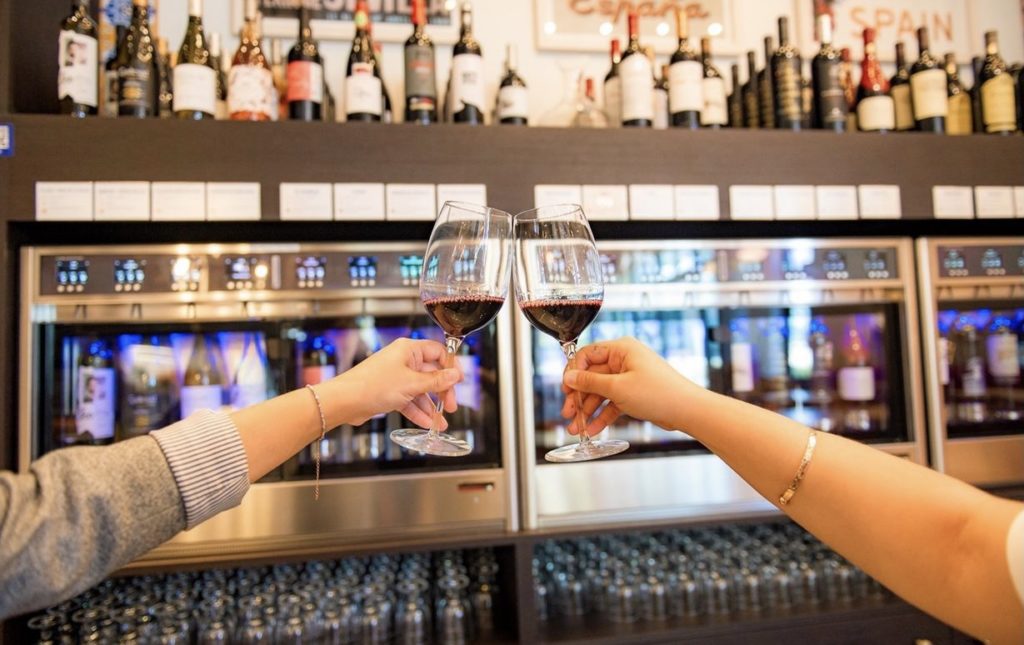
No matter how hard you try, things can go wrong at any start-up business, especially an alcohol-serving establishment like a wine bar. You may begin with a great plan, but if you make these three mistakes, you’ll make it much harder on yourself than it needs to be.
The top three mistakes entrepreneurs make include things like:
Now, let's go over each one to understand better why you should avoid these situations.
Here's a common, yet still hypothetical, example of why interior design and decor should come last, not first as many wine entrepreneurs believe. You can never force a certain ambiance into an establishment no matter how hard you try; your guests create the atmosphere, not the type of chairs you choose.
You may think that wood-grain, round bar tables would look great in your new wine bar, but will your guests feel the same way? Honestly, are you serving your own sensibilities, or are you serving customers' needs instead? These questions need honest answers because you have to pinch every penny when opening up an alcohol-serving establishment. Interior decor can devour your operating budget like no other expense.
Interior design, decorations, and ambiance should be your last concern if you want to open a wine bar correctly from day one.
Another major mistake is relying solely on word-of-mouth marketing, which is slow and inefficient, to say the least. Still, it's tempting to ignore investments in marketing and advertising and roll the dice with word-of-mouth marketing. It’s cheap (i.e., free), and the results coincide accordingly.
Listening to your guest is absolutely important, yet you have to use their feedback in the right way, meaning that you use those insights to adjust your offerings. Most entrepreneurs assume that building those personal relationships amplifies your bar’s brand; it doesn't. Making close friends in the wine-drinking community is one thing, but relying on word-of-mouth to promote your new business is another one entirely.
In the end, you have to invest in actual marketing and advertising to get the business off the ground. Then, you listen to your market and tailor your offerings to their expectations.
Along those lines, the biggest mistake you could possibly make is completely ignoring your target market’s feedback, especially their expectations. All it takes is a few bad reviews on social media to damage your brand irreparably, which can be a death blow to a new business since your target market will assume that your business doesn't care about its customers.
Once again, the issue boils down to a lack of empathy and misunderstanding the value of making genuine connections with your customers. Personally, you may love Cabernet Sauvignon more than any wine in the world, but should you stock your entire bar with it? And what if, after a few weeks, your guests start to request lesser-known varietals like Pinot Gris and Malbec, but you never put them on the menu?
It sounds ludicrous, yet those are real-world examples of how entrepreneurs can serve their own ego rather than fulfill their customers' desires. Honestly, it happens all the time in the bar business - and that's precisely why the majority of companies go belly-up within the first two or three years of business.
Having said that, let’s get into more details about the costs you can expect when opening a wine bar.
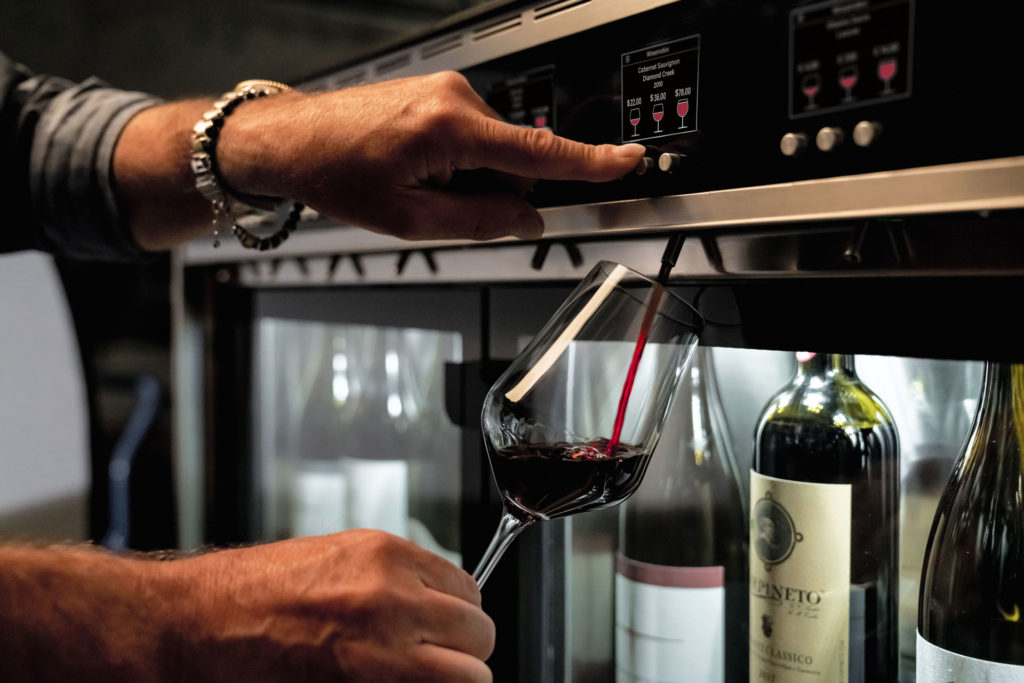
The great thing about starting a business is that it’s an adventure, but it can become an expensive one if you’re not careful about controlling costs, such as the following.
The common wisdom is that renovating a structure costs less than building a free-standing building from the ground up. Unfortunately, that's not always the case because there are Small Business Administration loan programs - and state-run small business programs, too - that can cut the cost of opening a business out-of-pocket.
But the biggest consideration of all is the value of the land where you want to open the bar.
If you want to open a wine bar in a vineyard mecca like Sonoma County, California, you can expect real estate to cost much more than other parts of the state. On the other hand, if you open a bar in a city like Dallas with relatively low real estate prices, you can afford to spend more on construction and renovations.
Ideally, you want to find a location that used to be a bar because the building should already have most of what you need already inside, such as a long bar top and shelves to store wine and glassware. Not only that, but some cities try to attract new businesses to a town center of sorts, so if you decide to go in this direction, you could save money on building costs as well.
We've already touched upon the cost of licensing, but let's go one step deeper and get into the details. No matter which state you call home, there will be several types of alcohol licenses that you will need.
For example, in Texas, you need a license to sell alcohol on-premises and another if you want to sell alcohol and allow your guests to leave the premises with it (e.g., a convenience store selling beer versus a bar selling the same item). Texas alone has 47 different types of permits and licenses regarding alcohol sales, so which state laws apply to your business?
That's one of the most important questions you have to answer since you will have to renew your liquor license regularly, most of the time annually, no matter what part of the country you call home. Still, the bottom line price can range anywhere between $1,000 to $10,000 or more depending on the type of business you plan to open (e.g., a wine bar that also serves food).
Now we come to the fun part of opening a business: marketing, advertising, and promotion! This point is usually where bar entrepreneurs begin, and it's a safe assumption that you need to conduct copious marketing research. But the real question is this: which facts and statistics matter most to the business? Are you looking to open up in an area with a specific demographic, or are you trying to open up a bar in a bustling urban area where demographics aren't necessarily your top concern?
The assumption is that a successful wine bar must tailor its services to the sophisticated, well-off clientele. This thinking might be true if you live in a place like Napa Valley, California. Still, if you live in a college town like Austin, you might be shooting yourself in the foot, especially if the local demographic tilts more towards the upper-middle-class millennial market.
There's a number of ways you could go wrong when it comes to marketing (i.e., growing the business steadily at an affordable price), but stereotyping people is the worst thing you could do. You need numbers to justify every business decision you make because when it comes time to invest in advertising and promotions, you need a guiding star, or else you could ultimately waste valuable dollars chasing dead ends.
A prime example is offering special discounts before you establish a certain sales volume.
Along those lines, let's talk about inventory and wine stock. Generally, you want to offer a wide variety, yet you don't want to get too esoteric with your offerings until your guests ask for them. You can never go wrong with an extensive wine inventory as long as you can store the bottles properly, so they don't spoil. We'll get more into that later on near the end of the guide.
But at a minimum, a wine bar should carry essential varietals like:
That's your starting point, so use that as a basis to add the lesser-known varietals like Petite Sirah, Spanish Garnacha, Viognier, or Port.
Another way to do it is to organize your wine list by region, but remember to add all of the greatest hits from that particular part of the world. The best wine lists have balance and a few surprises you don't expect, like a red blend from a local boutique winery.
No matter how you look at it, the idea is to give your guests a wine-drinking experience instead of only placing a glass of wine in front of them at the right price.
Give your target market a clear reason to stop by your establishment rather than buying the very same wine you serve but at a lower price from a liquor store. Why should they visit your wine bar instead of saving money? That's the crux of why it's so challenging to open up a wine bar.
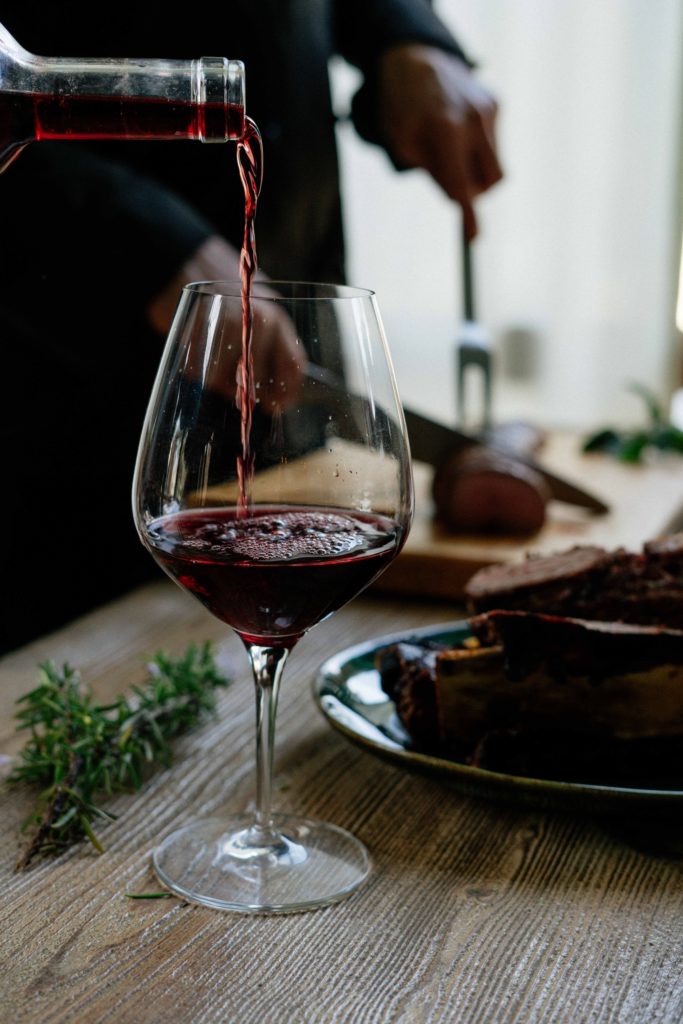
At this point, you should have a pretty good idea about what you want your wine bar’s concept to be. You have a great location, marketing statistics, demographics, and a great selection of wines from all parts of the world. So, the next step is to line up all of the vendors to provide you with all of the operational supplies you'll need.
But this still doesn't mean interior design and fashion! It's more practical and down-to-earth than that because you'll need plenty of glassware for both red and white wines, linens and napkins, wine aerators, wine openers, and all sorts of other materials that your staff needs to be successful. Cleaning supplies are another excellent example of something that you could purchase through a vendor rather than paying for it out-of-pocket at retail price.
The idea is to get wholesale prices through a vendor whenever you can, and the good news is that there are no shortages of restaurant and bar supply distributors to choose from.
Moving along our list of essentials, we come to labor costs. You can have a perfect business plan for a wine bar in the world and have all the marketing, promotions, and interior design ready, but what happens when you can't find any employees?
Are you going to work the bar yourself, or are you going to find a solution to the problem today, not three weeks after your grand opening when half of your staff quits since it's obvious that they won’t earn enough money?
Before the pandemic changed everything, it was relatively easy to find outstanding bartenders and servers. Without a doubt, the best ones are incredibly loyal to their employer, so they will not leave their current job unless they know for a fact that they will earn a better living.
That's the bottom line truth about hiring staff for a wine bar, an ordinary bar, or a restaurant. Labor is the lifeblood of your business because your team will own the point of sales, not you, and you'll depend upon them to grow revenue.
In other words, you can't keep your labor costs down until you can prove that working for your wine bar is a better option. It sounds simple, but it's not so easy, especially post-COVID, when health and safety remain top-of-mind for everyone in the industry.
Finally, we come to interior design and decor. This step is usually where most wine bar entrepreneurs begin, and it's absolutely the worst mistake imaginable. Please, don't assume that your market will enjoy the same styles and fashions that you do. It will be evident the moment that they walk in the door that you're not serving their needs.
For instance, you made love the concept of a lounge-like wine bar with comfortable sofas and small cocktail tables lining the walls. You dim the lights, light candles all over the bar top, and maybe add some soft, relaxing music in the background. But this setup is actually the worst type of environment for a wine bar because it's simply impractical to serve people alcohol this way.
A better environment would be a layout where your guests can mingle, walk around, and have plenty of space to do so. Before COVID hit, wine bars could get away with the quaint, cute appeal in a small, cozy bar; however, it’s the worst way to do it nowadays.
So before you reach for the artwork and sconces, make sure everything else is in order to maximize the value, but you can also save money in other ways, like when you buy a WineEmotion dispenser.
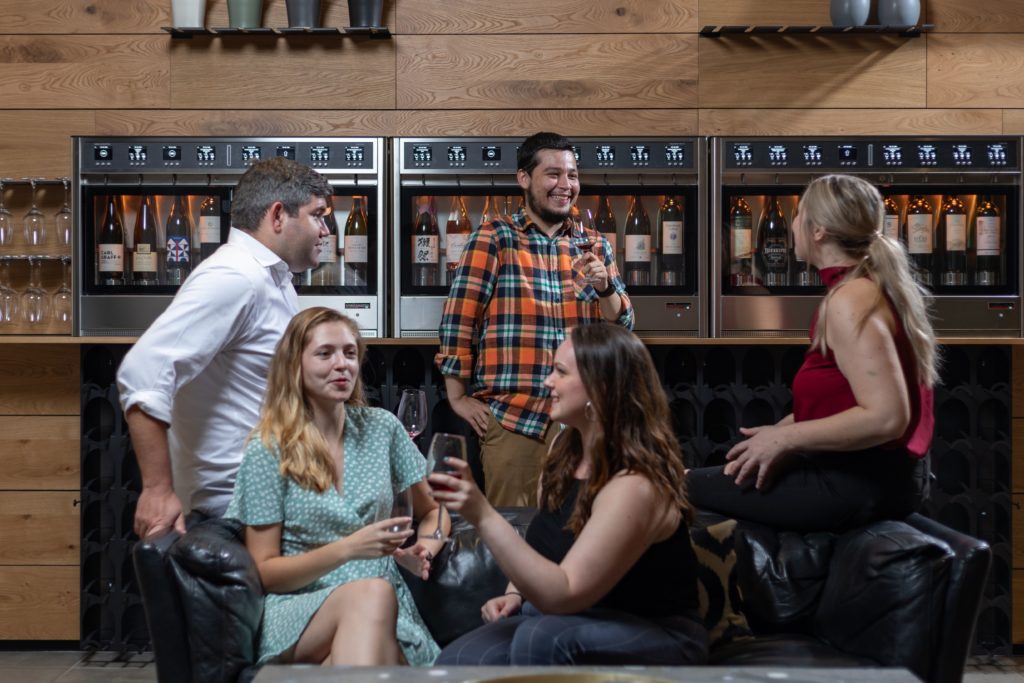
We've already gone over a lot of considerations up to this point. No matter what, it's challenging to open up a bar, especially a wine bar that may or may not appeal to the people you want to serve.
Among other considerations, we've already gone over the fact that you need a comprehensive inventory to be successful. Still, the risk is that you'll end up wasting valuable stock because the wine spoils or isn't stored correctly. Bartenders often over-pour wine to their favorite regulars as another example of how you could lose inventory.
But a wine dispenser by WineEmotion solves both of those problems in one appliance. Not only is it safer for employees, but it'll also give your guests a way to drink a perfect glass of wine once the bottle is already opened. Usually, a wine only lasts for a few days or less if it isn't stored correctly.
That's the problem with opening up a wine bar. It's all too easy to lose inventory because it goes bad. Ideally, you want your sales volume to do the heavy lifting for you, but starting, you'll need a way to keep costs reasonable.
Additionally, a WineEmotion dispenser by the glass is a great way to save valuable space. You may think that you have plenty of room to store wine until you start a collection. As a solution, WineEmotion dispensers can store up to 8 bottles per unit, and they will also preserve wine for an extended period of time since the system uses Argon gas to seal bottles between servings.
You can store wine for as long as 30 days or more, and it will still taste great and won’t lose any aromas. Also, some products come with automatic cleaning capabilities and software integrations as well.
It's one thing to have a wine dispenser by the glass, but integration with your current POS system is another one entirely. The best dispensers on the market today work well with the most popular restaurants and bar software. You can keep track of wine stock down to the ounce if configured correctly instead of guessing how much remains in each bottle.
Ultimately, you can take a huge gulp of success and open up a popular, thriving wine bar. All it takes is a plan, the right vendors and equipment, and a way to control inventory costs while offering excellent service and an even better atmosphere.
Are you curious to see what else a WineEmotion dispenser by the glass can do? Click to see industry-grade solutions on our website.